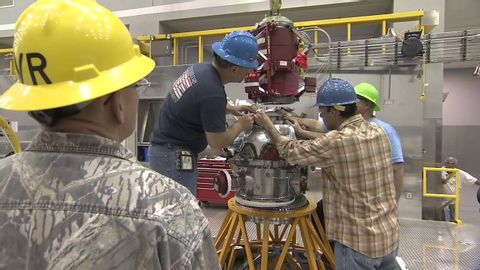
Subtitles & vocabulary
Discovery, Innovation and New Destinations Highlight "This Year @NASA"
00
稲葉白兎 posted on 2014/08/26Save
Video vocabulary
research
US /rɪˈsɚtʃ, ˈriˌsɚtʃ/
・
UK /rɪ'sɜ:tʃ/
- Verb (Transitive/Intransitive)
- To study in order to discover new ideas and facts
- To study the market relating to marketing products and services.
- Noun (Countable/Uncountable)
- Study done to discover new ideas and facts
- A particular area or topic of study.
A2TOEIC
More planet
US /ˈplænɪt/
・
UK /'plænɪt/
- Noun (Countable/Uncountable)
- One of the bodies that orbit the sun
- A different world or sphere of existence.
- Proper Noun
- The earth.
A2
More commercial
US /kəˈmɚʃəl/
・
UK /kəˈmə:ʃəl/
- Noun
- Radio or television advertisement
- Adjective
- Designed for or primarily concerned with financial success.
B1
More crew
US /kru/
・
UK /kru:/
- Countable Noun
- Organized group of workers (e.g. on a ship)
- Skilled group of people working together on a task
- Intransitive Verb
- To work as part of a crew.
A2TOEIC
More Use Energy
Unlock All Vocabulary
Unlock pronunciation, explanations, and filters
